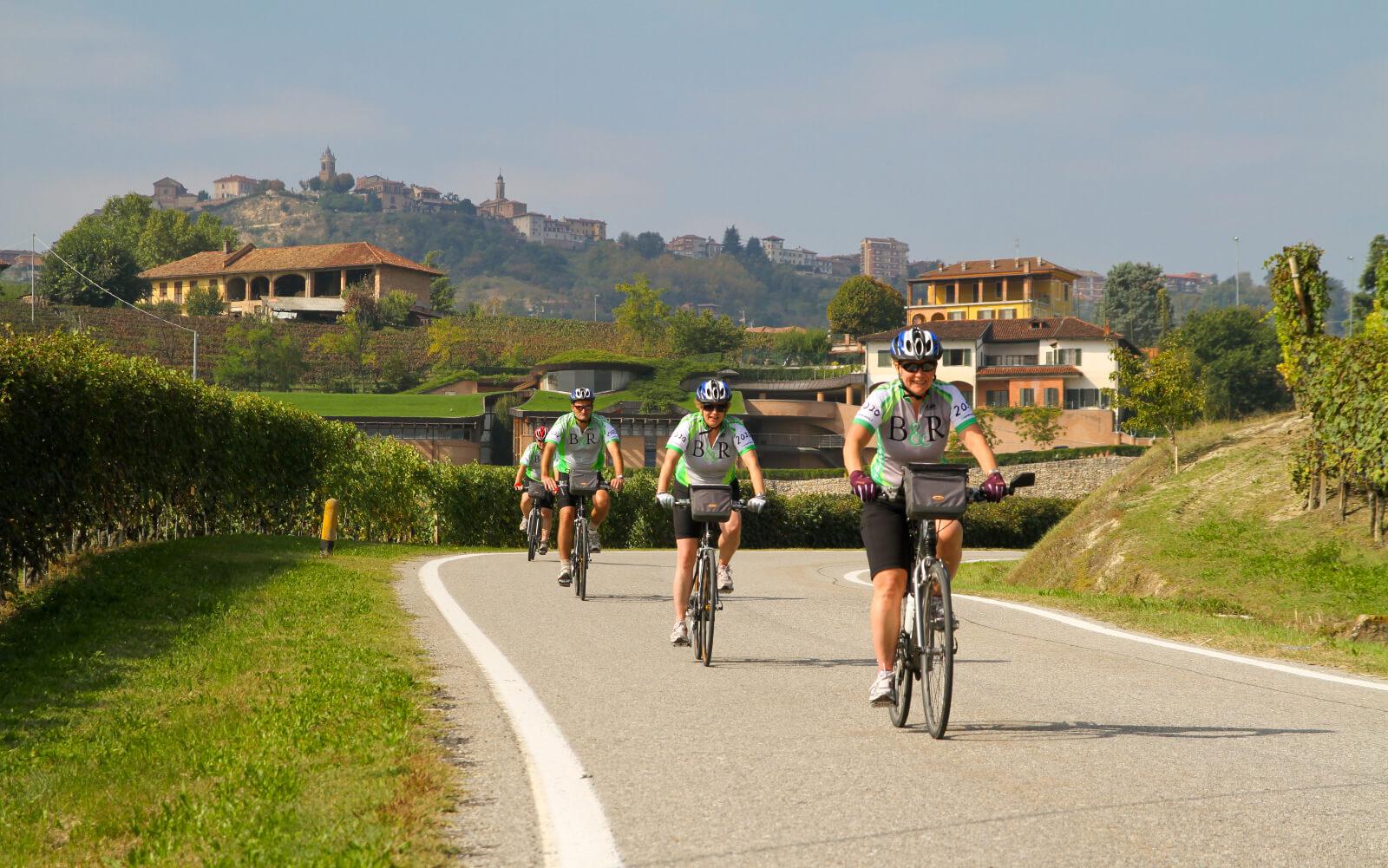![]() One of the reasons Butterfield & Robinson has been “Biking and Walking Since 1966” is because we do it right. And by right, we mean safely. While it’s true that anything can happen on the road—and sometimes that’s half the fun—following a few simple guidelines will keep you prepared for whatever you encounter.
One of the reasons Butterfield & Robinson has been “Biking and Walking Since 1966” is because we do it right. And by right, we mean safely. While it’s true that anything can happen on the road—and sometimes that’s half the fun—following a few simple guidelines will keep you prepared for whatever you encounter.
Descend Carefully:
As cars go around curves, they throw loose dirt and gravel to the edge of the road, creating a hazard for cyclists. Keep your speed reasonable when going down hills and be especially cautious at the outside edges. Always wear a helmet to avoid injuries.
Shift Your Rear Derailleur First:
You should be doing most of your shifting with the rear derailleur (the right-hand lever). Therefore, when you approach a hill, shift your rear derailleur into the easiest gear and then shift your front derailleur.
Shift Before the Hill:
As you approach a hill, shift your derailleurs (the rear one first) to an easy gear before you get to the hill. Once you are on the hill, the tension on the drivetrain will be too great for you to shift smoothly, and you may damage the derailleurs. Riding in an easy gear makes hills much easier— remember, there is no need for you to strain yourself. You are on vacation, after all.
The Joy of Spinning:
When riding, try to spin as comfortably as possible, as spinning reduces the amount of strain on your knees. Ideal cadence on flat terrain is 75 rpm.
Braking:
Your front brakes are twice as powerful as your rear brakes and provide about 70% of the braking power. (Remember: right lever = rear brake; left lever = front brake). Always apply brakes evenly and smoothly, but be careful, as they are more powerful than you may be used to. On gravel, always pump your brakes to avoid skidding. The same rule applies to wet pavement. Wet rims don’t brake well initially; pumping them helps them dry off as they brake.

